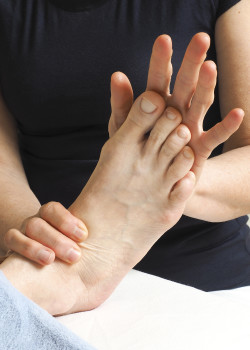What is reflexology?
Reflexology is an ancient natural healing art based on the principle that there are reflexes in the feet, hands and ears which correspond to every muscle, joint, gland and organ of the body. By applying pressure on specific reflex points a Reflexologist can stimulate the corresponding organs or glands, thus helping to restore normal functioning of the various systems of the body. Reflexology aims to improve your health by reducing tension, inducing deep relaxation and increasing circulation.



